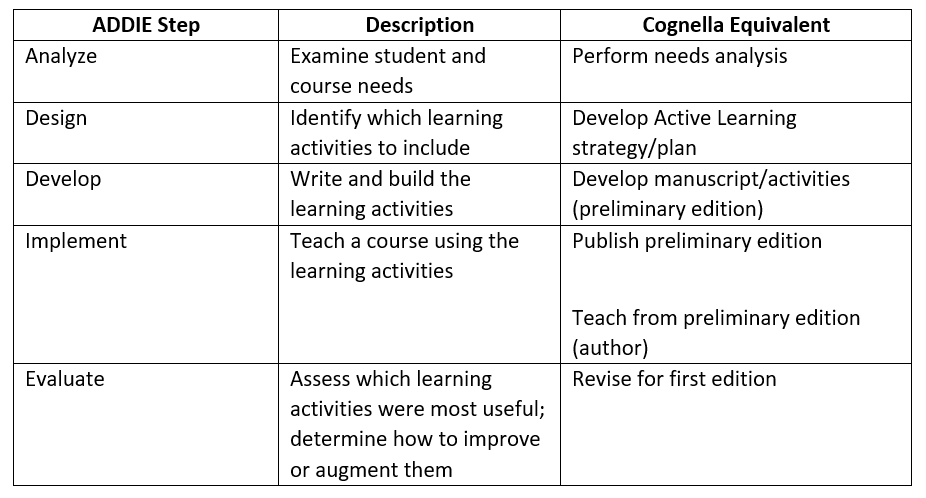Formally speaking, instructional design is a term that refers to the process of evaluating student needs, crafting learning objectives and outcomes, identifying learning events, and building formative and summative assessments that will help meet and measure performance to goal.
Implementing an instructional design model shows that an institution or organization takes instructional design seriously and employs it consistently. Using an instructional design model also enhances an organization’s reputation, shows consistency in its products, and connects design to value.
While instructional design principles are also relevant to writing textbooks and structuring their pedagogical components, the Active Learning team focuses on applying those principles to the activities that accompany, complement, or enhance our textbooks and other products. With that in mind, it may be simpler to think of instructional design as the creation of learning activities using the best methods available to meet learning objectives and outcomes.



